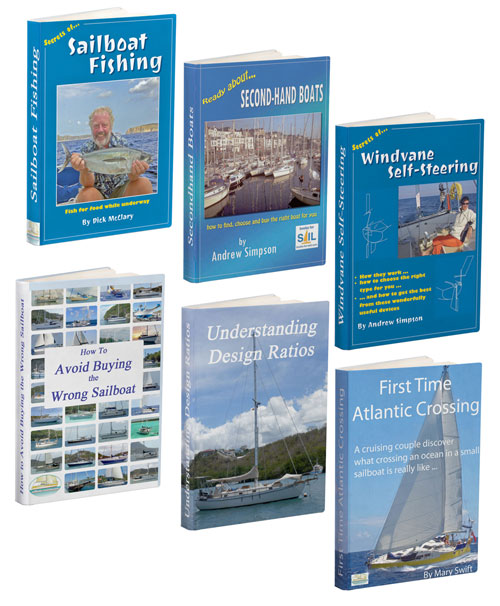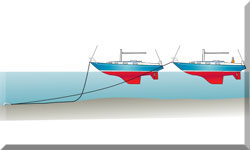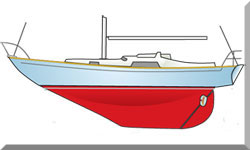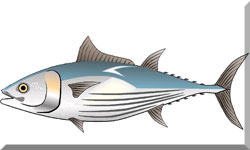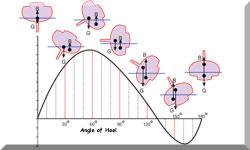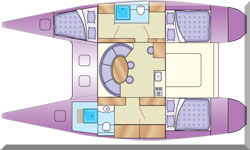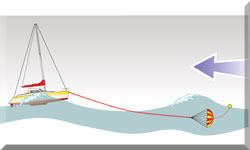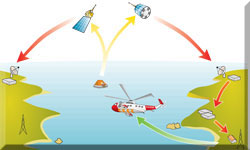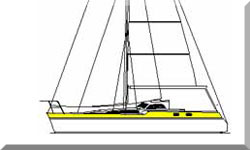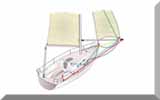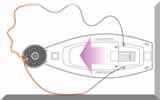Wheel-Steering Autopilots: Your Questions Answered
Wheel-steering autopilots typically include a drive unit that clamps onto the steering wheel, often with an adjustable clutch lever for easy switching between autopilot and manual steering.
The autopilot receives steering inputs from a compass, GPS, or other sensors, and then uses the drive unit to make the necessary adjustments to the wheel, effectively steering the boat.
How effectively does the autopilot maintain a precise course in varying wind and sea conditions specific to a wheel-steered yacht?
How effectively does the autopilot maintain a precise course in varying wind and sea conditions specific to a wheel-steered yacht?
The effectiveness hinges on the autopilot's sophistication and the quality of its components. Wheel steering systems can indeed introduce more complexity due to cable runs, quadrant mechanics, or hydraulic systems, potentially leading to more friction or play compared to a direct tiller pilot.
Advanced autopilots for wheel-steered yachts are technically complex, require robust drive units (linear, rotary, or hydraulic), and high-quality feedback sensors (rudder reference units) to compensate for these factors. They continuously monitor heading and rudder angle, making precise adjustments to maintain a tight track.
However, in lively conditions like strong beam winds creating significant leeway or large following seas causing the boat to yaw, even the best autopilots might require fine-tuning of settings (gain, rudder dampening) or may not perform as flawlessly as a skilled human helmsman. The key is a powerful drive unit matched to the yacht's displacement and rudder authority.
What is the quality and responsiveness of the autopilot's reaction to changes in apparent and true wind when in wind vane mode on a wheel-steered vessel?
What is the quality and responsiveness of the autopilot's reaction to changes in apparent and true wind when in wind vane mode on a wheel-steered vessel?
High-quality autopilots designed for wheel-steered yachts offer excellent responsiveness in windvane mode. They utilize data from sophisticated wind instruments (often ultrasonic or high-accuracy anemometers) to detect even subtle shifts in apparent wind angle.
When in true wind mode (requiring boat speed input), they can maintain a consistent course relative to the actual wind direction, which is particularly valuable in shifty conditions.
The larger inertia of wheel-steered yachts necessitates a well-tuned autopilot with appropriate gain settings to avoid overcorrection and hunting, ensuring smooth and efficient sailing on a set wind angle.
How well does the autopilot integrate with advanced navigation instruments such as high-precision GPS, AIS, and sophisticated wind sensors to enable features like track steering, waypoint following with cross-track error correction, and automatic avoidance manoeuvres?
How well does the autopilot integrate with advanced navigation instruments such as high-precision GPS, AIS, and sophisticated wind sensors to enable features like track steering, waypoint following with cross-track error correction, and automatic avoidance manoeuvres?
Seamless integration is a hallmark of modern autopilots for wheel-steered yachts. They typically communicate via NMEA 0183 or the more advanced NMEA 2000 protocols. This allows them to receive precise GPS data for accurate track steering and waypoint following, including sophisticated algorithms to minimize cross-track error due to wind and current.
Integration with AIS can provide visual and audible alerts for approaching vessels, and some advanced systems can even initiate pre-programmed avoidance manoeuvres, significantly enhancing safety, especially during shorthanded watches or in busy shipping lanes.
Can the autopilot be configured to account for the specific handling characteristics and balance of a larger, wheel-steered sailboat under different sail plans and loading conditions?
Can the autopilot be configured to account for the specific handling characteristics and balance of a larger, wheel-steered sailboat under different sail plans and loading conditions?
Absolutely. Experienced sailors understand that a yacht's behaviour changes significantly with different sail combinations (e.g., full main and genoa vs. storm jib and reefed main) and loading (e.g., full cruising gear vs. stripped for racing).
Advanced autopilots for wheel-steered yachts offer extensive customization options. Parameters like gain (rudder response to course error), counter-rudder (amount of opposite rudder applied to stop a turn), yaw damping (resistance to oscillations), and response time can be precisely adjusted and often saved in user profiles for different sailing conditions.
This fine-tuning is essential for optimal performance, minimizing rudder drag, and providing a comfortable ride.
How does the autopilot perform under engine power, and can it effectively compensate for prop walk or other engine-related steering biases common in larger sailboats?
How does the autopilot perform under engine power, and can it effectively compensate for prop walk or other engine-related steering biases common in larger sailboats?
A well-designed autopilot for a wheel-steered yacht should perform reliably under engine power. It uses the same heading data and rudder feedback to maintain a straight course.
More advanced units can be calibrated to compensate for consistent prop walk (the tendency of a propeller to push the stern sideways) or other engine-related steering biases that are more pronounced at low speeds.
This often involves a specific calibration routine where the autopilot learns the boat's behaviour under power and applies a consistent counter-steering input.
What are the options for remote control and interface with the autopilot system from different locations on the boat, such as the companionway or foredeck, which can be particularly useful on a larger yacht?
What are the options for remote control and interface with the autopilot system from different locations on the boat, such as the companionway or foredeck, which can be particularly useful on a larger yacht?
Several options exist for remote control and interface on larger wheel-steered yachts. Wireless remote controls allow for course adjustments, mode changes, and even initiating tack/gybe sequences from anywhere on deck. Integration with mobile devices (smartphones or tablets) via dedicated apps or NMEA-WiFi gateways is also common, providing a visual interface for monitoring and controlling the autopilot. These remote options are invaluable for shorthanded sailing, sail changes, or manoeuvring in tight spaces.
What is the long-term reliability track record of this autopilot system, particularly the drive mechanism (linear, rotary, or hydraulic) designed for wheel steering on larger displacement yachts?
What is the long-term reliability track record of this autopilot system, particularly the drive mechanism (linear, rotary, or hydraulic) designed for wheel steering on larger displacement yachts?
Experienced offshore sailors place a premium on proven reliability. Reputable manufacturers of autopilots for larger wheel-steered yachts have extensive track records. Linear drives are robust for many applications, while rotary drives are often preferred for their smooth and powerful action on mechanically linked wheels. Hydraulic drives, while offering significant power for larger yachts with hydraulic steering, require careful installation and maintenance.
Researching user reviews, forums, and manufacturer reliability data is crucial to assess the long-term performance of specific drive types and models.
How resistant is the drive unit to wear, corrosion, and potential damage from sustained use in demanding conditions, including extreme temperatures and humidity often encountered on extended voyages?
How resistant is the drive unit to wear, corrosion, and potential damage from sustained use in demanding conditions, including extreme temperatures and humidity often encountered on extended voyages?
Drive units for offshore-capable autopilots are typically built with high-quality, corrosion-resistant materials such as stainless steel, anodized aluminium, and sealed components to withstand the harsh marine environment. They are designed for sustained use, but regular inspection for wear, lubrication (if required), and protection from direct water ingress are essential for longevity, especially in tropical or high-humidity environments.
Are the critical components of the autopilot system, including the computer, drive, and sensors, designed with redundancy or fail-safe mechanisms to prevent a single point of failure from causing a complete loss of steering?
Are the critical components of the autopilot system, including the computer, drive, and sensors, designed with redundancy or fail-safe mechanisms to prevent a single point of failure from causing a complete loss of steering?
Redundancy is a significant safety consideration for offshore yachts. Some high-end autopilot systems offer features like dual processors in the control computer or the ability to interface with a backup heading sensor. While complete drive unit redundancy is less common in standard recreational autopilots, ensuring compatibility with and regular maintenance of emergency steering systems (e.g., an emergency tiller) is crucial as a fail-safe. Well-designed installations also allow for quick disconnection of the autopilot drive in case of a major failure, enabling manual steering.
Is the autopilot system compatible with emergency steering mechanisms, and does its installation allow for quick and easy transition to manual or emergency steering in case of a major failure?
Is the autopilot system compatible with emergency steering mechanisms, and does its installation allow for quick and easy transition to manual or emergency steering in case of a major failure?
Compatibility with emergency steering is a fundamental safety requirement. The autopilot installation should never impede the deployment or operation of an emergency tiller or other backup steering systems. The drive unit should be easily disengageable from the steering mechanism (e.g., via a clutch or quick-release mechanism) to allow for immediate manual control in an emergency. Regular practice of switching to emergency steering is highly recommended.
How intuitive and user-friendly is the autopilot control head interface, especially in challenging conditions like darkness or rough seas, where clear feedback and simple controls are essential?
How intuitive and user-friendly is the autopilot control head interface, especially in challenging conditions like darkness or rough seas, where clear feedback and simple controls are essential?
User-friendliness is paramount, especially when conditions are less than ideal. Autopilot control heads for wheel-steered yachts typically feature clear, backlit displays with large, easy-to-read characters. Buttons should be tactile and logically arranged for quick and intuitive operation, even with gloved hands. Dedicated buttons for frequently used functions (engage/disengage, course adjust, mode selection) are preferred over complex menu navigation in rough seas or at night.
Does the autopilot offer advanced sailing features such as automated tacking and gybing sequences that can be initiated with a single button press, and how customizable are these manoeuvres for different wind strengths and boat speeds?
Does the autopilot offer advanced sailing features such as automated tacking and gybing sequences that can be initiated with a single button press, and how customizable are these manoeuvres for different wind strengths and boat speeds?
Many modern autopilots for wheel-steered yachts offer automated tacking and gybing. These sequences can often be initiated with a single button and allow for hands-free manoeuvres, particularly useful for shorthanded crews. The degree of customization varies, with more advanced systems allowing adjustment of parameters like the rate of turn, the pause time at the head-to-wind, and the final heading after the manoeuvre to optimize for different wind strengths and boat speeds.
Can the autopilot be programmed with specific steering patterns for tasks like searching for a MOB (Man Overboard) or maintaining a specific offset from a racing mark?
Can the autopilot be programmed with specific steering patterns for tasks like searching for a MOB (Man Overboard) or maintaining a specific offset from a racing mark?
High-end autopilots for wheel-steered yachts often include pre-programmed or user-programmable steering patterns for specific tasks. MOB search patterns (e.g., Williamson turn, Scharnberg turn) can be initiated quickly in an emergency. The ability to maintain a specific offset from a racing mark can be valuable for tactical positioning during races.
Does the system offer a "no drift" mode or similar functionality that uses GPS data to counteract leeway and current, maintaining a precise course over ground, which is particularly relevant for coastal cruising and racing?
Does the system offer a "no drift" mode or similar functionality that uses GPS data to counteract leeway and current, maintaining a precise course over ground, which is particularly relevant for coastal cruising and racing?
Many advanced autopilots for wheel-steered yachts offer a "no drift" or "track" mode that utilizes GPS data to compensate for the effects of leeway (sideways slip due to wind) and current. By continuously comparing the boat's actual course over ground with the desired track, the autopilot makes small steering adjustments to stay on the intended path, which is crucial for accurate navigation in coastal areas with tides and currents or for maintaining a precise course during a race.
How effectively does the autopilot handle situations with significant weather helm, and does it offer features to automatically trim or suggest sail adjustments to reduce helm load and improve steering efficiency?
How effectively does the autopilot handle situations with significant weather helm, and does it offer features to automatically trim or suggest sail adjustments to reduce helm load and improve steering efficiency?
While an autopilot can steer a boat with weather helm, excessive helm load increases power consumption and puts unnecessary strain on the drive unit. Some sophisticated autopilots can detect sustained weather helm and may offer features like automatic rudder gain reduction under high load.
More advanced integrated systems might even interface with electronic sail trim systems or provide data that can inform the crew about the need for sail adjustments to balance the boat and reduce helm.
Can the autopilot be easily calibrated and fine-tuned by the user for optimal performance on their specific vessel, and are there diagnostic tools available to help identify and resolve potential issues?
Can the autopilot be easily calibrated and fine-tuned by the user for optimal performance on their specific vessel, and are there diagnostic tools available to help identify and resolve potential issues?
User calibration and fine-tuning are essential for optimal performance. Modern autopilots for wheel-steered yachts typically offer intuitive calibration routines for compass deviation, rudder offset, and various performance parameters.
Many systems also include built-in diagnostic tools that can help identify sensor errors, drive unit issues, or communication problems, often displaying error codes or providing data logs to aid in troubleshooting.
What is the average and peak power consumption of the autopilot system, especially the drive unit under heavy load, and how should this be factored into the yacht's overall power management plan for extended periods away from shore power?
What is the average and peak power consumption of the autopilot system, especially the drive unit under heavy load, and how should this be factored into the yacht's overall power management plan for extended periods away from shore power?
Power consumption is a critical consideration for cruising yachts. The average power draw of the autopilot system (computer and sensors) is relatively low. However, the peak power consumption of the drive unit, especially when working hard in heavy weather or making large course corrections, can be significant.
Experienced cruisers carefully calculate their power budget, taking into account the autopilot's consumption, and ensure they have adequate battery capacity and charging sources (solar, wind, generator) to sustain it, especially during extended periods offshore without shore power.
Manufacturer specifications provide power consumption figures, but real-world usage can vary.
What are the key considerations and best practices for professional or DIY installation of the autopilot system on a wheel-steered yacht to ensure optimal performance and longevity?
What are the key considerations and best practices for professional or DIY installation of the autopilot system on a wheel-steered yacht to ensure optimal performance and longevity?
Key installation considerations include:
- Proper Drive Unit Selection: Matching the drive unit's power and type (linear, rotary, hydraulic) to the yacht's displacement and steering system.
- Accurate Sensor Placement: Locating the compass sensor in a magnetically clean area, ensuring the rudder reference unit provides accurate feedback, and properly mounting the heading sensor.
- Secure and Correct Wiring: Using appropriate gauge wire, making secure and waterproof connections, and following the manufacturer's wiring diagrams precisely.
- Mechanical Alignment: Ensuring the drive unit is properly aligned with the steering mechanism to prevent binding and excessive wear.
- Calibration: Performing the initial calibration routines meticulously. Professional installation often ensures these critical steps are executed correctly.
What is the recommended routine maintenance schedule for the autopilot system, and are common wear parts readily accessible and replaceable by the boat owner?
What is the recommended routine maintenance schedule for the autopilot system, and are common wear parts readily accessible and replaceable by the boat owner?
Routine maintenance typically involves:
- Regular Inspection: Checking for any signs of corrosion, loose connections, or damage to cables and components.
- Cleaning: Keeping the control head and drive unit clean and free from salt spray.
- Lubrication: Following the manufacturer's recommendations for lubricating any moving parts in the drive unit.
- Software Updates: Keeping the system software up to date if applicable.
- Checking Connections: Ensuring all electrical connections are tight and free from corrosion. Accessibility of common wear parts (e.g., drive belts, clutches, some seals) varies by manufacturer. Checking the availability of spares and considering carrying essential replacements for long voyages is prudent.
Consulting the owner's manual for specific maintenance schedules is highly recommended.
Recent Articles
-
Wheel-Steering Autopilots: Your Questions Answered...
Apr 18, 25 03:45 PM
Whatever your question, you should find the answer here -
Tiller Pilots: Your Questions Answered...
Apr 18, 25 08:18 AM
Got a question about sailboat tiller pilots? Odds are, you'll find the answer here -
Is Marine SSB Still Used?
Apr 15, 25 02:05 PM
You'll find the answer to this and other marine SSB-related questions right here...
